How Do These 5 Women Artists Find Their Muse in the Wild?
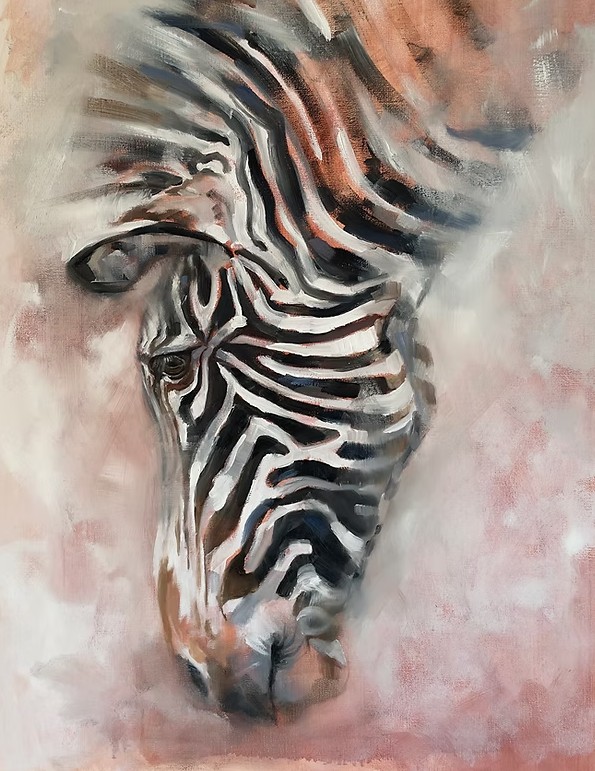
How Do These 5 Women Artists Find Their Muse in the Wild is a story about five painters who have each found their creative footing in the natural world. It follows their paths from different corners of life, a geneticist, an engineer, a wildlife observer, and two lifelong nature lovers and explores how time spent watching animals, studying light, and noticing quiet moments has shaped the way they work. Each of them brings something different to the table, yet they all share the same instinct to look closely and to turn what they see into something lasting.
The article offers a close look at what it means to paint wildlife with care and patience. Johanna Excell, Kourtney Hope, Karen Laurence Rowe, Deeksha Chauhan, and Julie Brunn speak about the routines that keep them grounded, the materials they trust, and the pull they feel toward the creatures and landscapes that inspire them. Their stories move from ocean tides to African plains to small countryside studios, revealing the steady rhythm behind every painting.
More than anything, the piece is about connection. These women paint to notice, to protect, and to remember. They show that art about the natural world isn’t just about capturing a scene—it’s about spending time within it, understanding its fragility, and letting that understanding guide what ends up on the canvas. Through their work, they invite us to slow down and see the wild with the same attention they give it every day.
Johanna Excell @art.by.johannaexcell
Johanna Excell’s path to painting began in science. Trained as a geneticist in Finland, she spent years studying life at its most minor scale before turning her attention to the broader world of animals and oceans. In 2018, she started painting, at first as a quiet escape, then as a calling that slowly took over her days. Now based in Germany, she works with everything from oils and acrylics to watercolour and clay, moving between materials with curiosity and care.
Her childhood was spent in Southeast Asia, surrounded by warm seas, coral reefs, and tropical light. Those memories are still alive in her work. Many of her pieces focus on marine life sea turtles, fish, whales often painted with a tenderness that comes from both admiration and worry. Her art carries the sense of someone who has seen beauty firsthand and knows how fragile it can be.
Johanna paints to celebrate nature, but also to speak about the strain it faces. She has talked openly about feeling the weight of climate change and the harm caused by pollution and habitat loss. Instead of turning away from those thoughts, she lets them shape her purpose. Through her paintings and sculptures, she supports conservation projects and uses her platform to raise awareness for endangered species.
Her daily routine is steady and thoughtful. She spends mornings with heavier materials like oils or clay, then turns to watercolour in the afternoon. Some days she paints intuitively, while on others, she begins with careful sketches and small, dotted details that she finds calming. Inspiration often arrives in simple ways the curve of a shell, the colours of a bag, or the pattern of her daughter’s clothing.
What ties Johanna’s work together is a quiet sense of connection. She paints with both affection and urgency, reminding us that every creature, no matter how small, shares a place in the same story. Through her art, she asks us to look closer, to care more, and to see the world as something worth protecting.
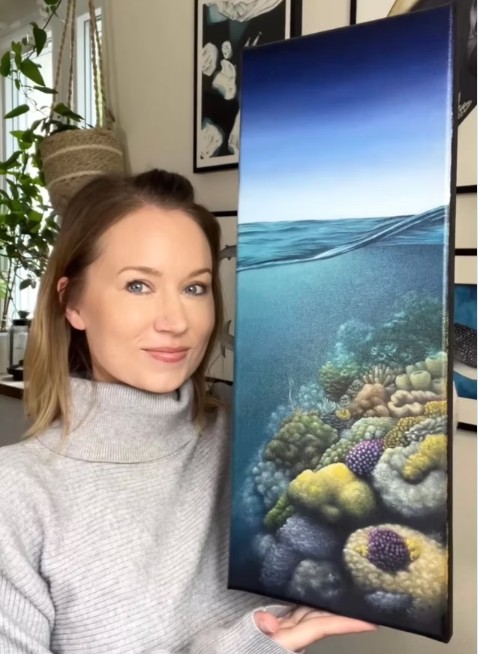
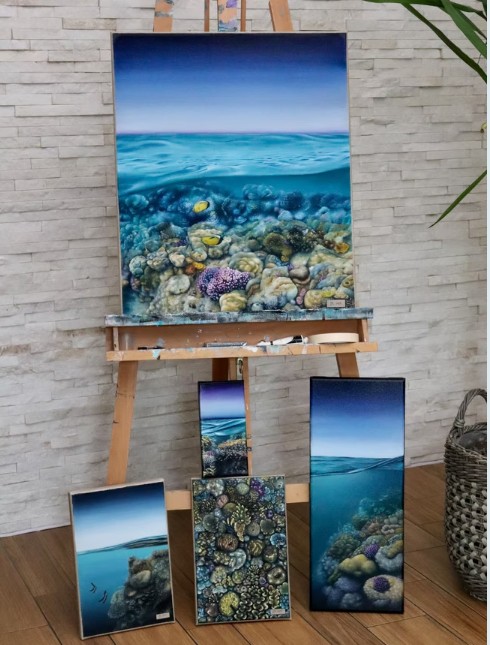
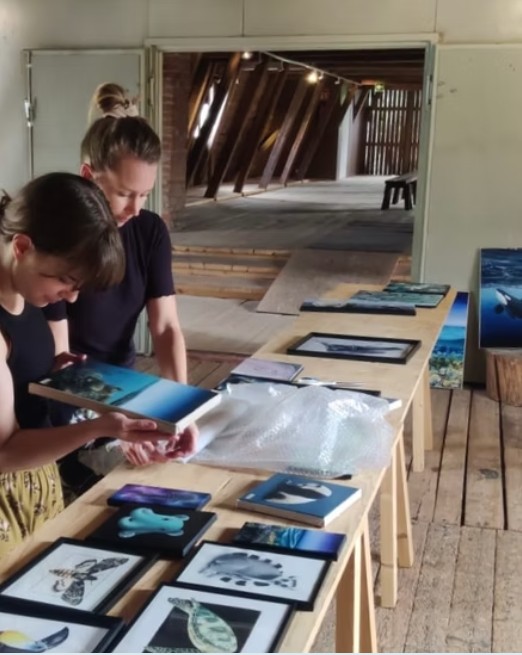
Kourtney Hope @the_art_of_kourtney_hope
For Kourtney Hope, art and nature have always been intertwined. She talks about being drawn to the quiet presence of wild creatures and the small moments that most people overlook. That sense of wonder eventually led her to become a wildlife artist, working with soft pastels to create lifelike portraits of animals that feel close and familiar.
Her process is slow and layered. She works on textured sanded paper, adding fine strokes of pastel repeatedly until the surface feels alive with fur, light, and movement. Each colour is placed with care, and her use of tone and shadow gives her subjects a natural sense of calm and presence. The result is work that feels quietly observed rather than composed.
Kourtney prepares and frames each piece herself, ensuring that the work arrives ready to hang and well-cared-for from start to finish. She pays attention to every stage, from choosing the frame to using glass that protects the delicacy of pastel without dulling its colour. For her, this part of the process matters as much as the painting itself; it’s about respect for the animal and the viewer alike.
Her studio is filled with earthy tones and half-finished pieces, each one in a different stage of becoming. She often works in the company of music, letting rhythm guide the pace of her hand. There’s a sense of stillness in how she paints, as though she’s meeting the animal halfway rather than trying to capture it completely.
Through her art, Kourtney Hope brings nature a little closer. Her subjects, wolves, foxes, owls, and other creatures, carry a quiet honesty that draws the viewer in. She paints not for spectacle, but to share a kind of closeness that exists when you stop, look, and really see the living world.
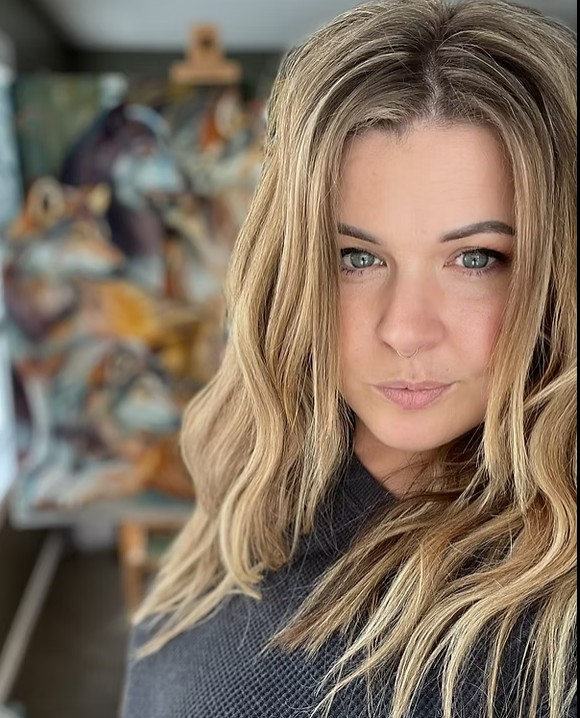
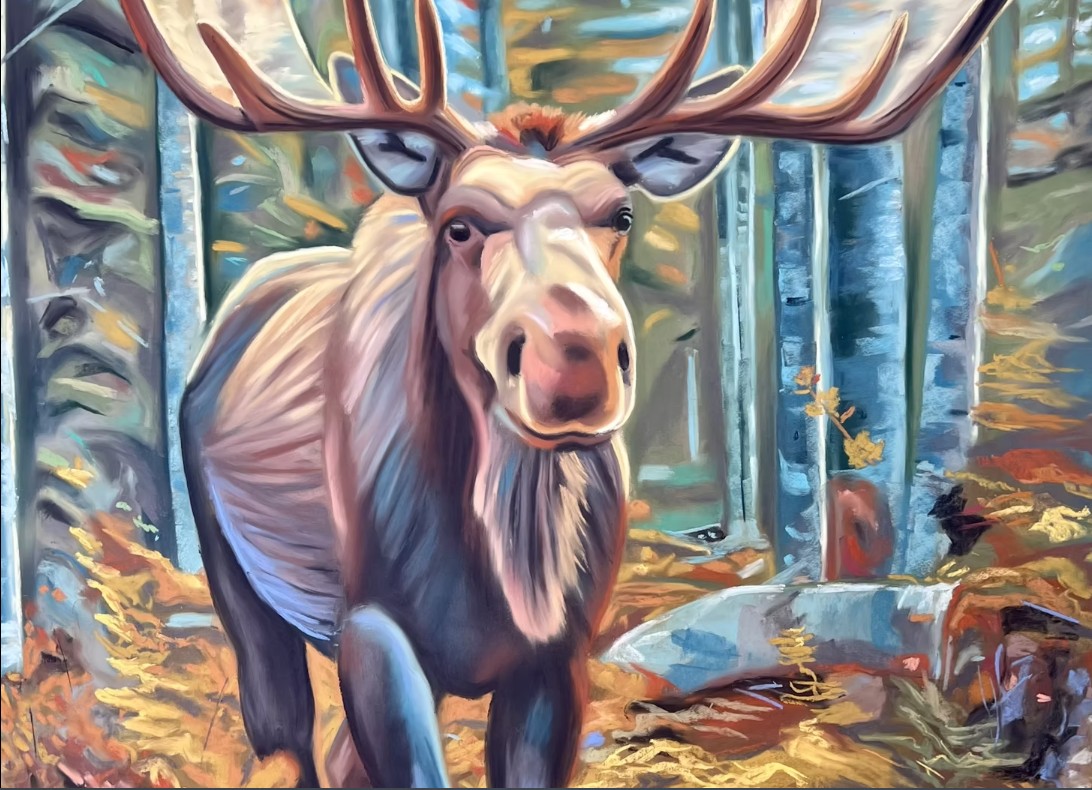
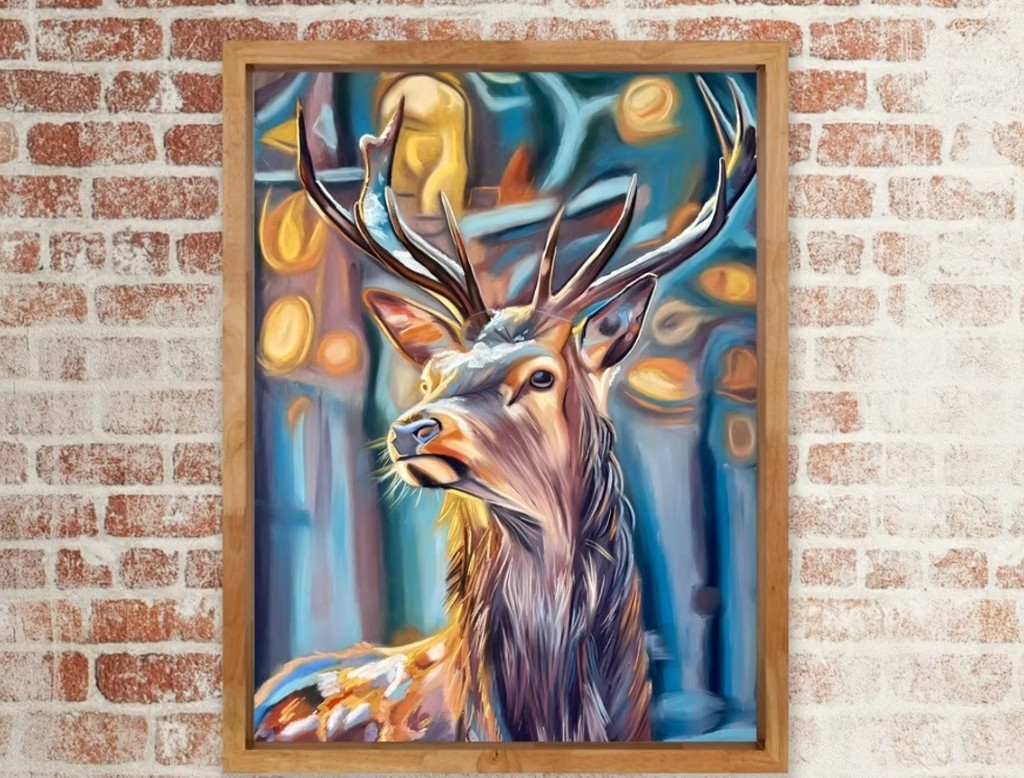
Karen Laurence Rowe @karen_laurence_rowe_art
Karen Laurence Rowe’s life began in the wild heart of Africa. Born in Uganda, she grew up surrounded by open plains, vast skies, and the sounds of lions in the distance. Her father was a civil engineer, and the family often moved to follow projects that built roads and bridges across East Africa. For Karen, childhood meant wooden shanties, nights filled with the calls of animals, and days spent sketching with her siblings when there was little else to do. Those early drawings, made out of curiosity and play, became the foundation of a lifelong connection to the land around her.
Now based on Kenya’s coast, Karen still draws inspiration from the same wilderness that shaped her early years. She spends much of her time outdoors, sketching and observing animals in their natural surroundings before returning to her studio to paint. Each trip into the field renews her connection to the landscapes and creatures that have always felt like home.
Karen works efficiently across oil, watercolour, and charcoal, allowing each piece to find its natural rhythm. Her paintings carry the raw truth of the African wilderness sunlight, dust, movement, and silence captured through years of patient study. Yet behind every image lies a growing concern for what is being lost. As habitats shrink and species decline, her work has become both a celebration and a record of what she loves most.
She supports conservation efforts through her partnerships with Helping Rhinos and the David Shepherd Wildlife Foundation, often donating her paintings to help raise funds for wildlife protection. For her, painting and conservation are inseparable; both speak to the need to preserve what remains before it’s gone.
Karen’s work has found homes around the world, but its spirit remains rooted in Africa. Her canvases tell stories of life, of wild places still holding their ground, and of an artist who paints not just what she sees but what she feels must be remembered.
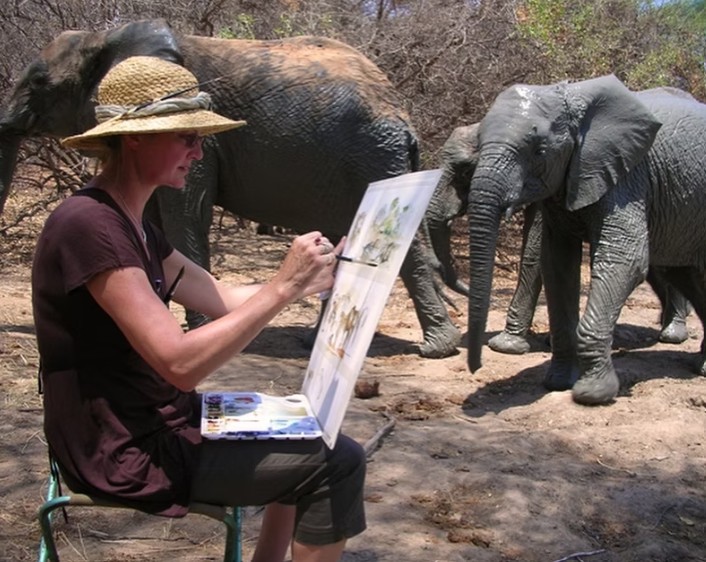
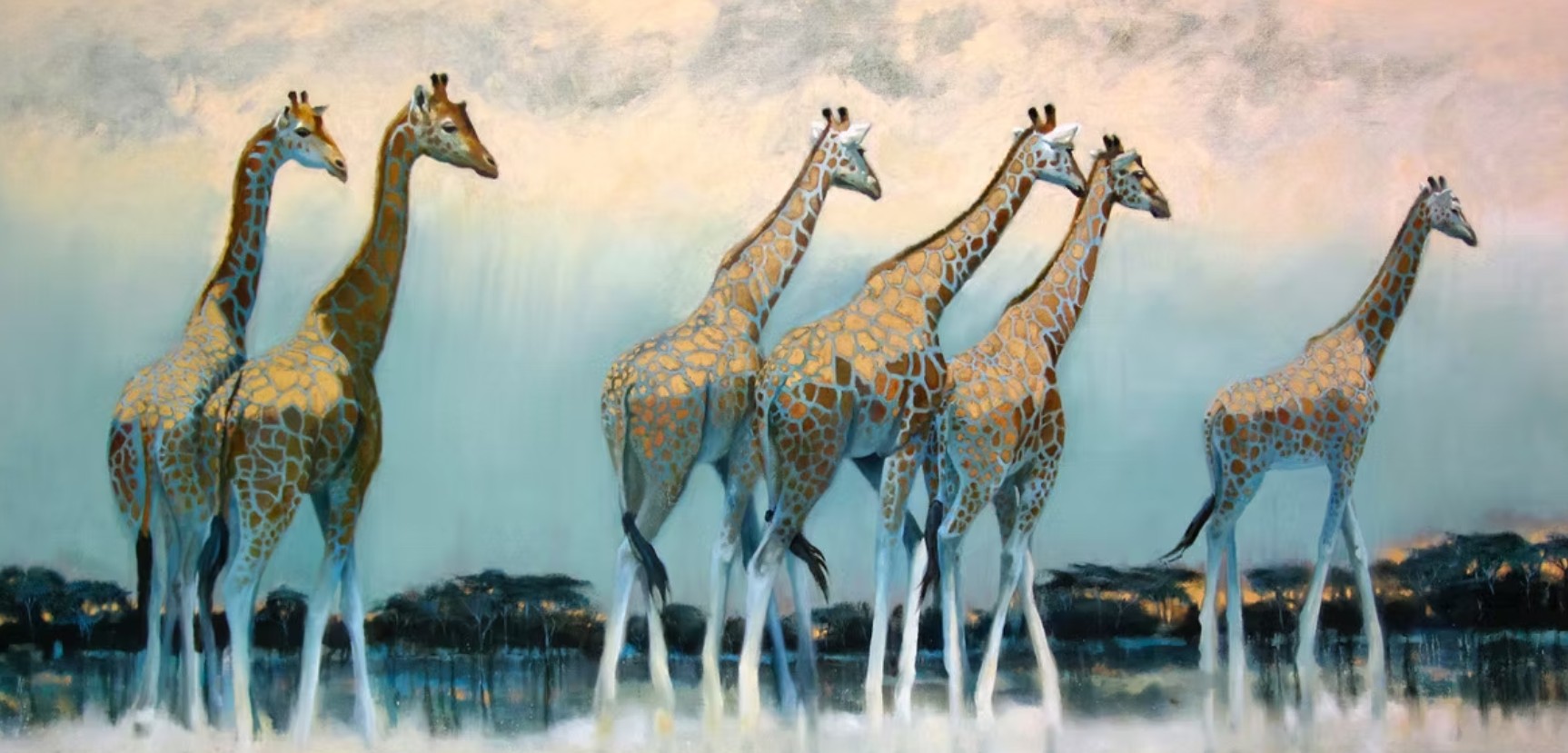
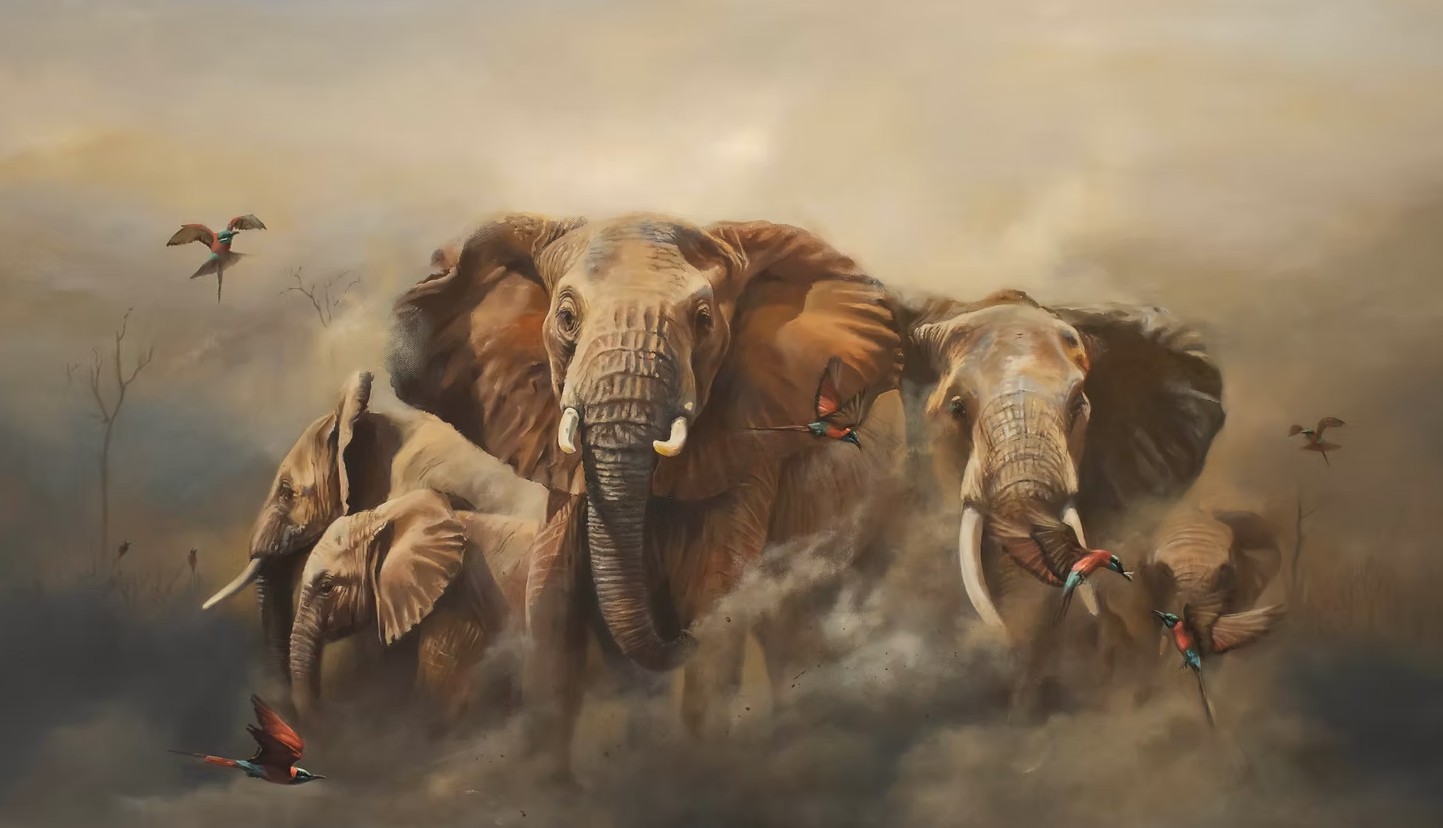
Deeksha Chauhan@deekshachauhan.art
For Deeksha Chauhan, painting animals isn’t just a passion—it’s a calling that grew stronger with time. Based in India, she creates lifelike portraits of wild creatures with a quiet intensity that draws you closer. Each piece carries a sense of care and attention that comes from years of observing, feeling, and learning without a teacher.
Deeksha began painting as a child, but her path to a life in art wasn’t straightforward. Trained as an engineer, she spent years working in a very different world before deciding to follow what she describes as an inner pull toward creation. In 2020, she made the change that would define her future. Since then, her work has steadily gained recognition for its remarkable detail and the emotion it captures in stillness.
Her process is guided by instinct. Without formal instruction, she studies each animal closely—its texture, light, and quiet strength and brings it to life through countless layers of observation and patience. Every canvas feels like a meeting point between what she sees and what she feels, all while staying true to the animal before her.
Beyond painting, Deeksha is closely involved in animal welfare. She rescues and nurses local wildlife and stray animals, caring for them with the same tenderness that shows in her art. For her, creation and compassion go hand in hand. The studio and the field are part of the same journey.
Through her paintings, Deeksha Chauhan invites us to pause and see animals not as distant subjects but as companions sharing our space. Her story is one of courage, curiosity, and quiet devotion a reminder that sometimes the most meaningful paths begin when we listen closely to what has always been there.
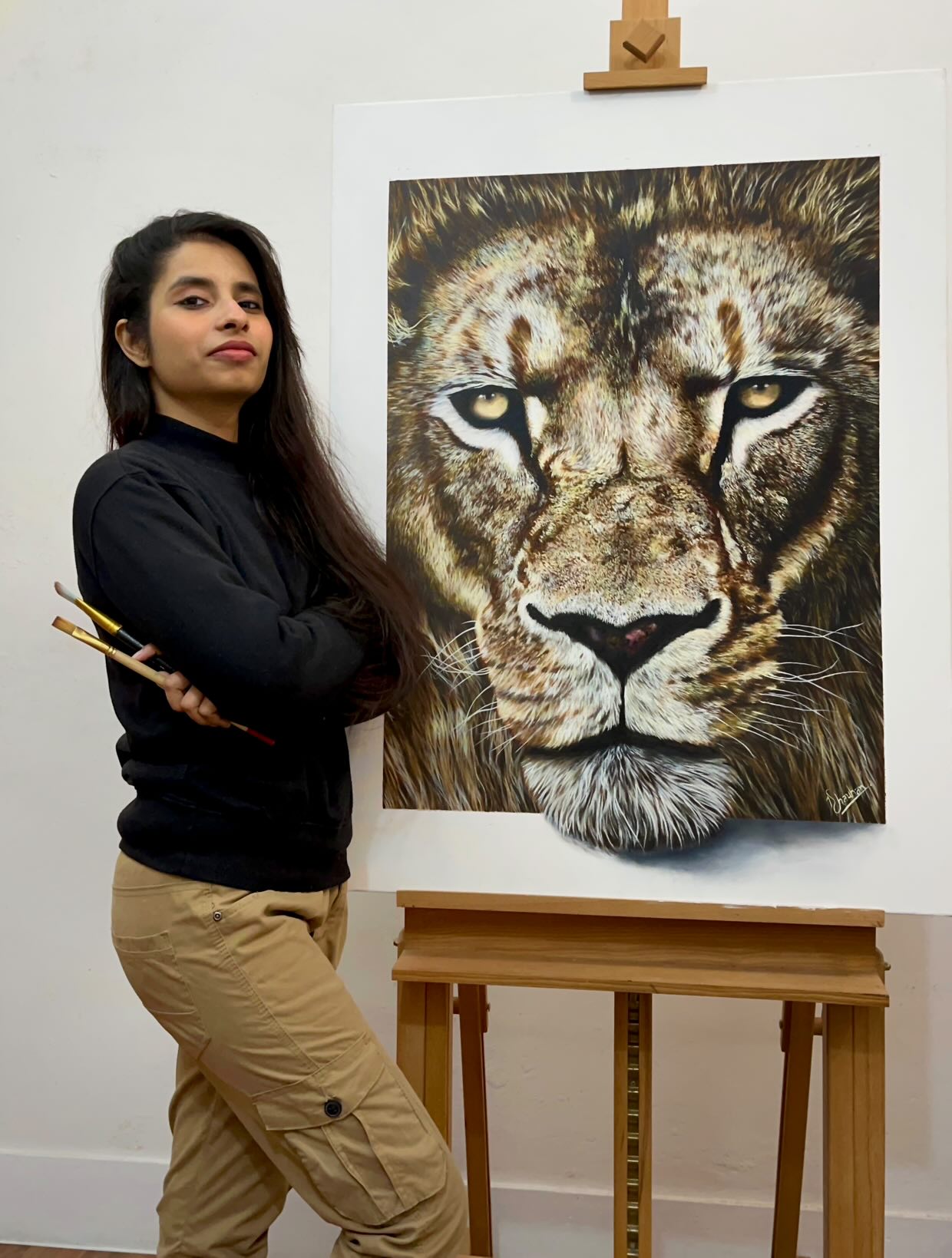
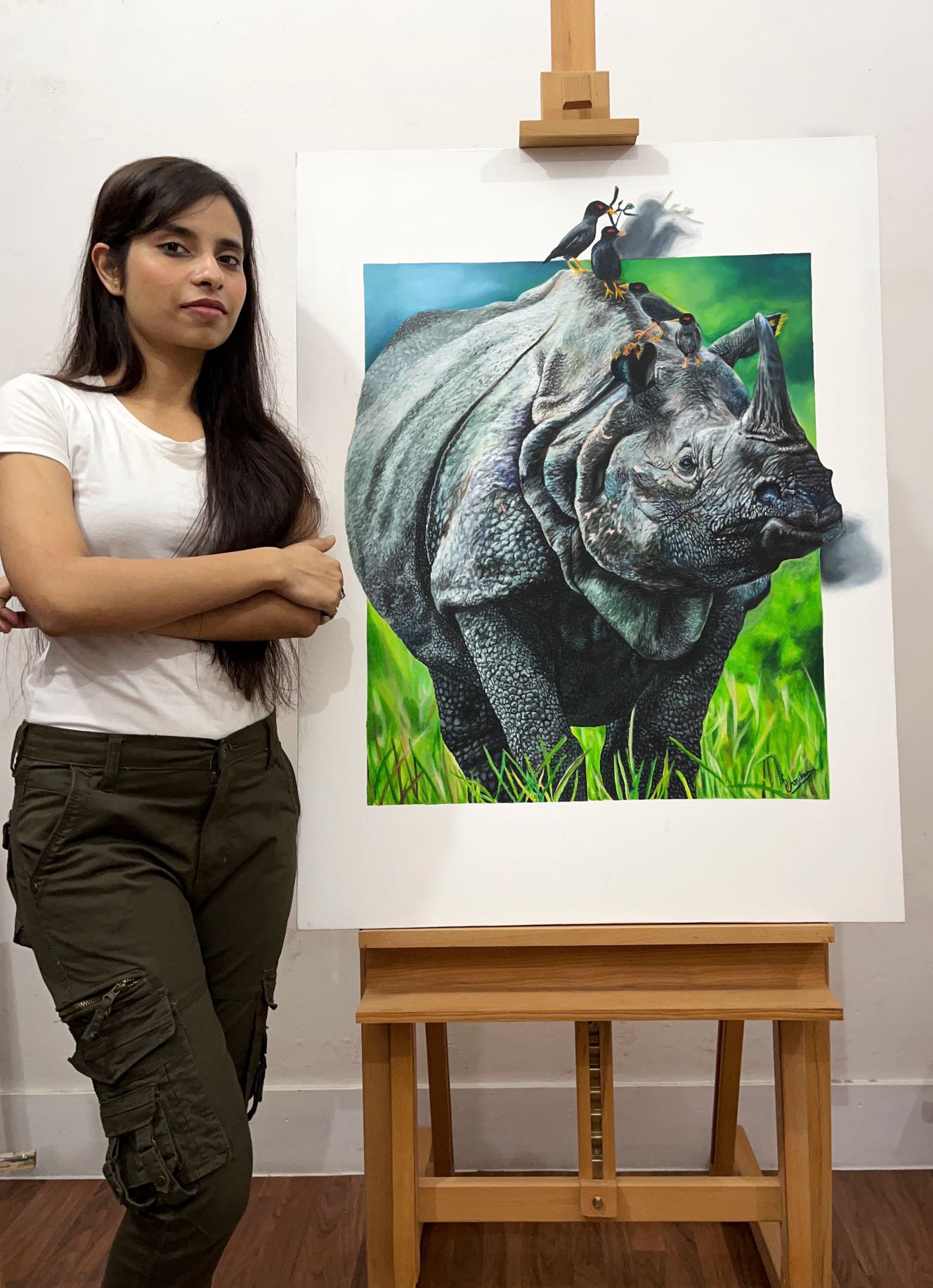
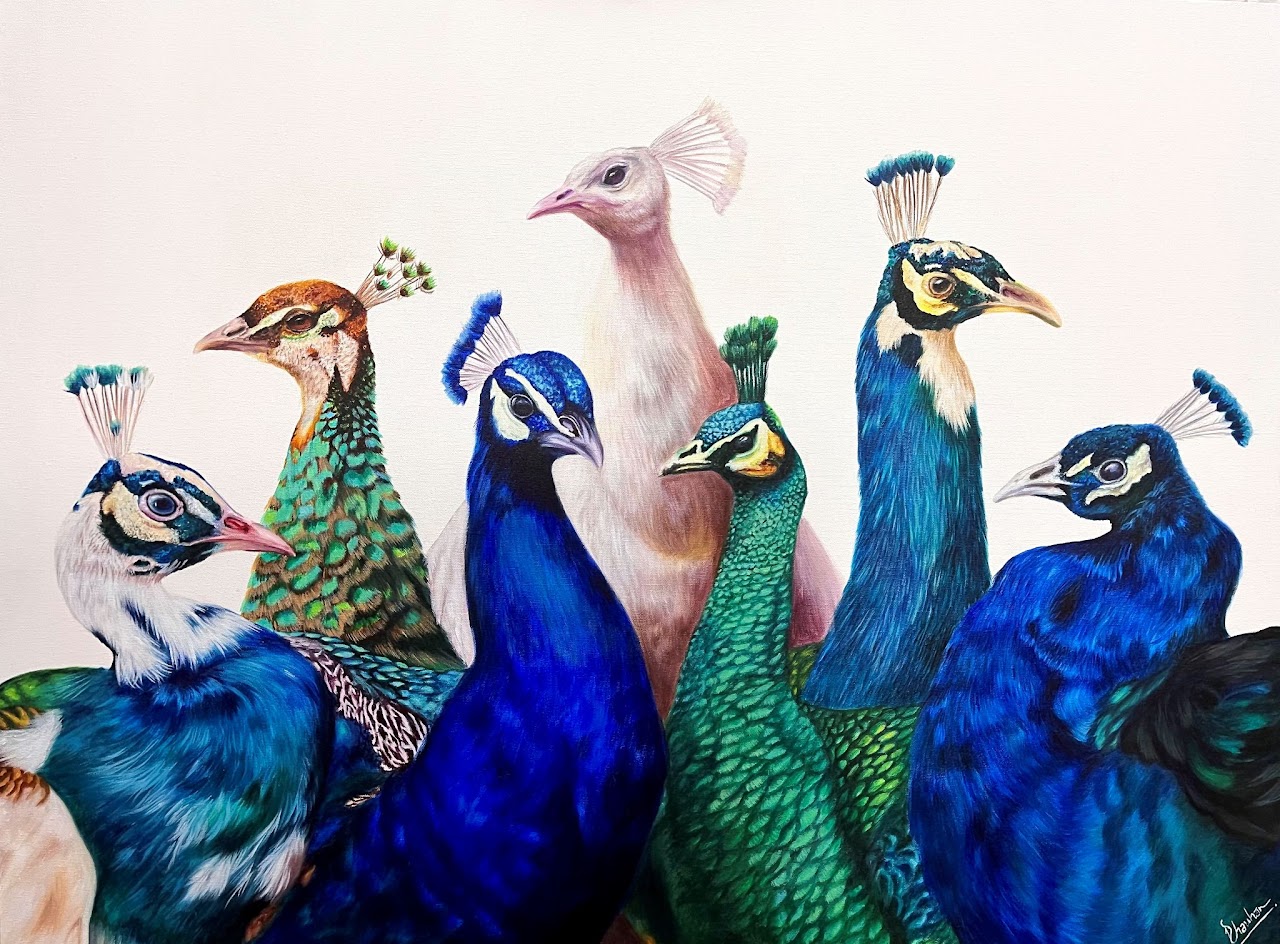
Julie Brunn @juliebrunnartist
Julie Brunn has become a quiet force in contemporary wildlife painting, known for the sensitivity and atmosphere that inhabit her canvases. Working in oils from her studio nestled among the Devonshire hills, she paints with an instinctive awareness of the animals that share her surroundings. Horses graze outside her window, chickens cross the yard, and the occasional fox moves through the fields beyond. These daily moments form the heartbeat of her work.
Each painting carries an almost tender immediacy, as if the animal has just turned toward the viewer. Her use of soft transitions of light and carefully considered tones gives every piece an unspoken presence. There is a sense of calm curiosity in her subjects, often portrayed with a quiet dignity that draws the eye and holds it.
Living on a smallholding allows Brunn to study movement and expression at close range. She spends her days in her garden studio beside the stables, often sketching or beginning new canvases while her animals linger nearby. This closeness gives her paintings an authenticity that cannot be manufactured. The connection between artist and subject is clear not through embellishment, but through understanding.
Her work, celebrated in exhibitions and collections across the UK, speaks to those who see animals not only as subjects but as companions and characters within the shared landscape. Through her gentle precision and thoughtful observation, Julie Brunn reminds us that the beauty of wildlife often lies in its quiet moments the stillness before motion, the pause that reveals life in its truest form.
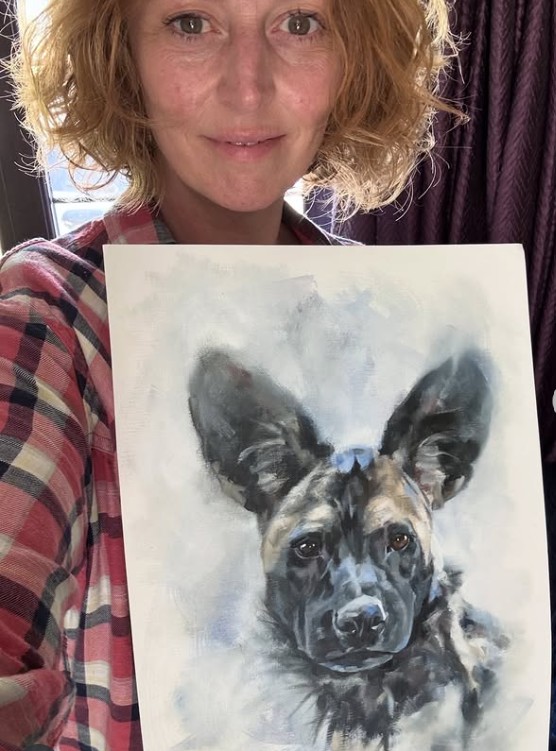

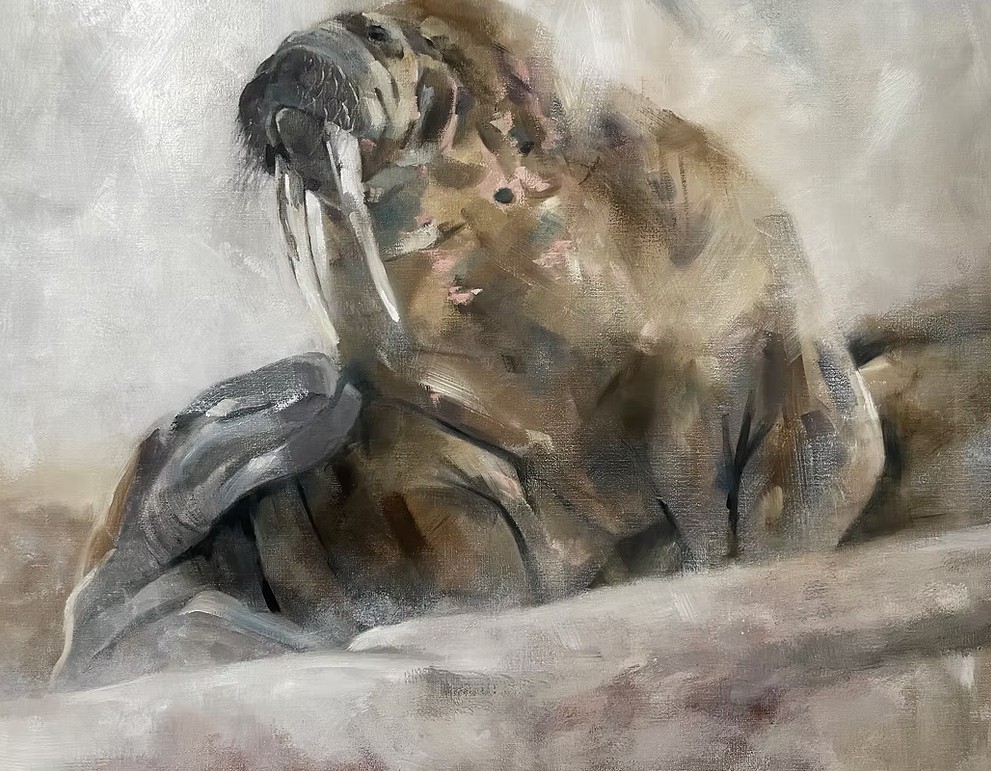
In the end, what ties these five women together is a quiet respect for the world they paint. Each has found her way to connect with nature not through grand gestures, but through steady work, close observation, and genuine care. Their stories remind us that painting wildlife is as much about patience as it is about passion. Whether they’re studying the sea, the forest, or the fields outside their window, their work grows from the same place: a wish to notice what’s here and to keep it alive in memory and paint.
